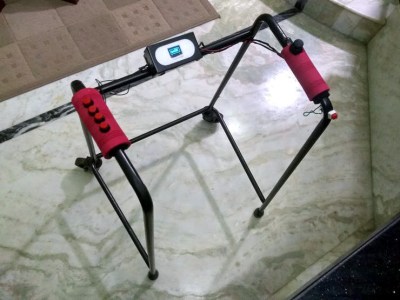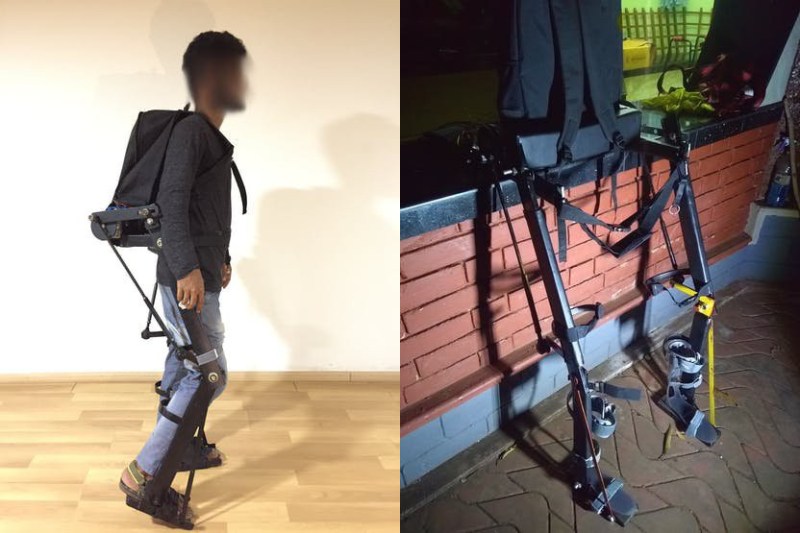Humans make walking look simple, but of course that’s an illusion easily shattered by even small injuries. Losing the ability to walk has an enormous impact on every part of your day, so rehabilitative advances are nothing short of life-changing. The Open Exosuit for Differently Abled project is working feverishly on their Hackaday Prize entry to provide a few different layers of help in getting people back on their feet.
 We’ve seen a number of exosuit projects in the past, and all of them struggle in a few common places. It’s difficult to incorporate intuitive user control into these builds, and quite important that they stay out of the way of the user’s own balance. This one approaches those issues with the use of a walker that both provides a means of steadying one’s self, and facilitates sending commands to the exosuit. Using the OLED screen and buttons incorporated on the walker, the user can select and control the walking, sitting, and standing modes.
We’ve seen a number of exosuit projects in the past, and all of them struggle in a few common places. It’s difficult to incorporate intuitive user control into these builds, and quite important that they stay out of the way of the user’s own balance. This one approaches those issues with the use of a walker that both provides a means of steadying one’s self, and facilitates sending commands to the exosuit. Using the OLED screen and buttons incorporated on the walker, the user can select and control the walking, sitting, and standing modes.
The exoskeleton is meant to provide assistance to people with weakness or lack of control. They still walk and balance for themselves, but the hope is that these devices will be an aid at times when human caregivers are not available and the alternative would be unsteady mobility or complete loss of mobility. Working with the assistive device has the benefit of continuing to make progress in strengthening on the march to recovery.
The team is hard at work on the design, and with less than two weeks left before the entry deadline of the 2020 Hackaday Prize, we’re excited to see where the final push will bring this project!



















Walking barefoot in a lab is an invitation to serious injury. Do they want to help people with disabilities or inflict them on themselves?
Guinea pigs don’t grow on trees.
Tiny OLED is too tiny for the elderly users.
On the one hand i want to enthusiastically applaud this (any sort of open source/diy device meant to help people with disabilities is great, on paper) on the other i feel like a line is crossed here, imo people should be extremely careful with ‘hacking’ stuff onto a human to this extend, with something like this it only takes a small software or hardware error to hurt a person.
Agree, love the enthusiasm, but caution is needed. In devices like this where one “small” bug can cause real injury there are industry standards that need to be applied. IEC 62304 mainly for the software and ISO 60601 for the hardware and electronics. Open source methodologies, while great in a lot of uses, just aren’t able to be used in this kind of safety critical applications. It is irresponsible to test this on people.
As someone in the target demographic for this, I’m happy to see this kind of development. While I’m sure it isn’t perfect, it is a step in the right direction. I had used a walking aid on my knee that cost several thousand dollars only to have it go belly up after the warranty expired. I’d love to too see more tech like this that brings the possibility of improved mobility to more people.